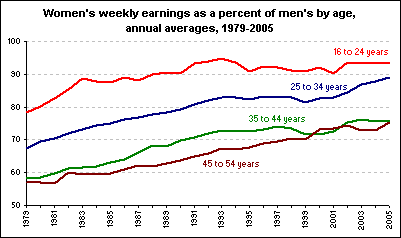Diversity within the workplace is a broad topic, incorporating both the need for social justice and the high potential value of employing a workforce diverse enough to compete in an increasingly global economic environment.
As a result, the workplace has undergone a number of trends that promote diversity and minimize group biases, as the ethical and economic importance of diversity is well-established. Analyzing trends in equality and value in diversity is useful for managers seeking to incorporate both.
Equality of Opportunity
Affirmative Action
The early stages of pursuing equality in the workplace arose in the 1960s, most notably with the concept of affirmative action. Affirmative action essentially establishes legal quotas—set by the U.S. government—for the number or percentage of representation by minority populations in a company's hiring practices.
Minority populations are generally defined according to race, ethnicity, or gender. One difficulty with affirmative action is that it can encourage employers to fill quotas rather than avoid bias, potentially motivating some employers to hire specifically by race, ethnicity, or gender; hiring based upon any of these characteristics is illegal.
Social Justice
As a result of this criticism, the equal-opportunity movement evolved towards a model based more on social justice. This perspective still promotes the active seeking out of diversity in the workplace, but does so primarily based on the intrinsic value of employees with different backgrounds and skill sets.
The social-justice trend also meant a shift from a more limited viewpoint of what constituted a "minority" towards a more comprehensive one that places age, physical ability, and sexual orientation alongside traditional categories of race and gender. The social justice model of diversity is distinct from the older affirmative action in that it focuses less on employing minorities and more on the value of a diverse workforce.
Gender differences offer a strong statistical example of this trend, as male and female wage equality has been consistently trending towards equilibrium. Wage equality shows distinct improvement as a result of equal-opportunity ethics, a trend that supporters of equality hope continues toward equilibrium.

Gender wage trend
This chart illustrates that while gender wage inequality is diminishing, further efforts are necessary to promote parity.
Value of Diversity
The ethics of diversity in the workplace are rightly emphasized. The natural value achieved through varying perspectives in the workplace complements social justice well. Organizations that lack a culture inclusive of any and all potential groups generally have lower productivity and higher turnover. Promoting an environment conducive to a global and internationalized economy through diverse hiring and management practices potentially results in increased productivity.
A homogeneous workforce has a much lower capacity to achieve synergy. Upper management, recognizing the strategic value of diversity, continues to pursue the knowledge and skills necessary for a truly inclusive workplace.